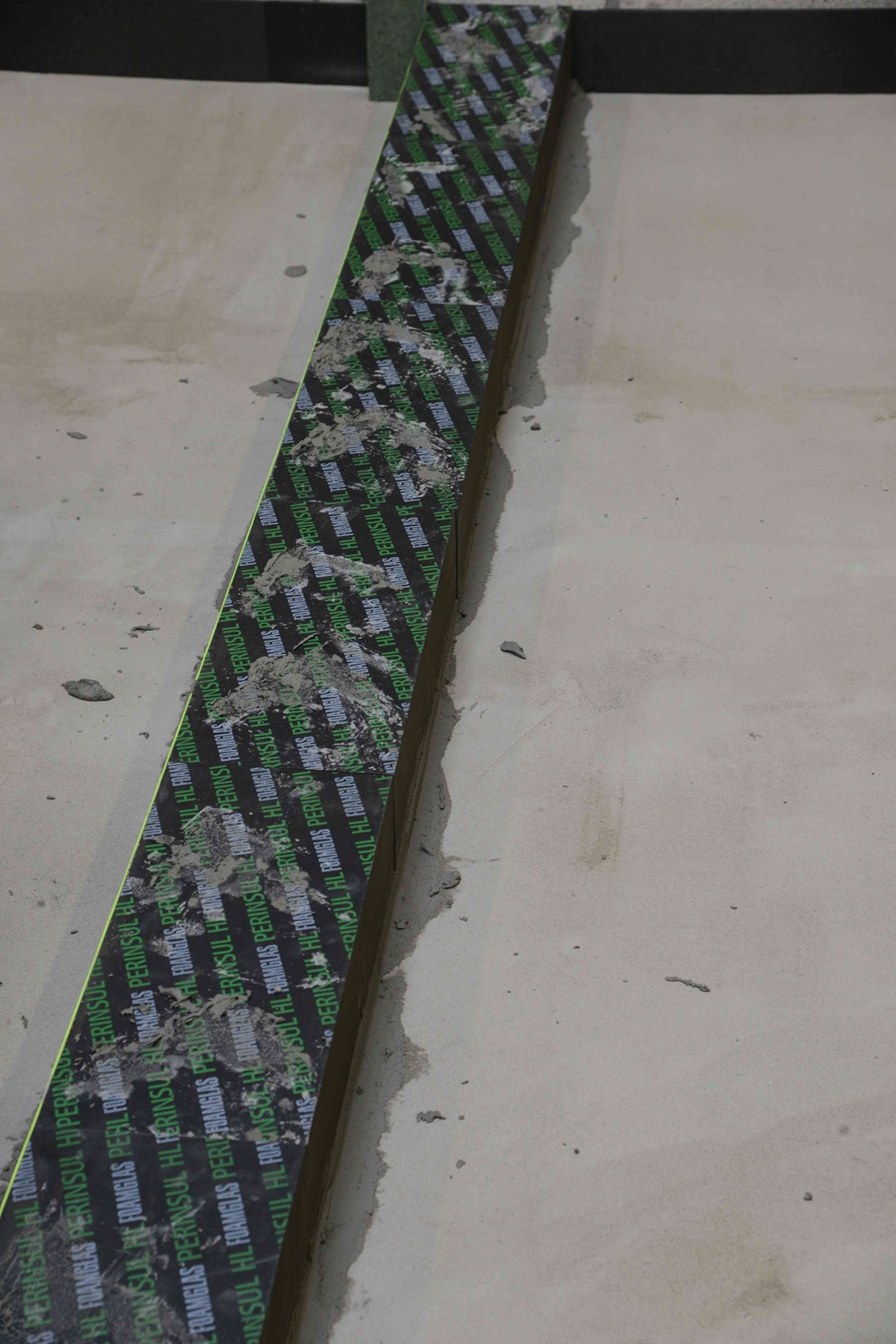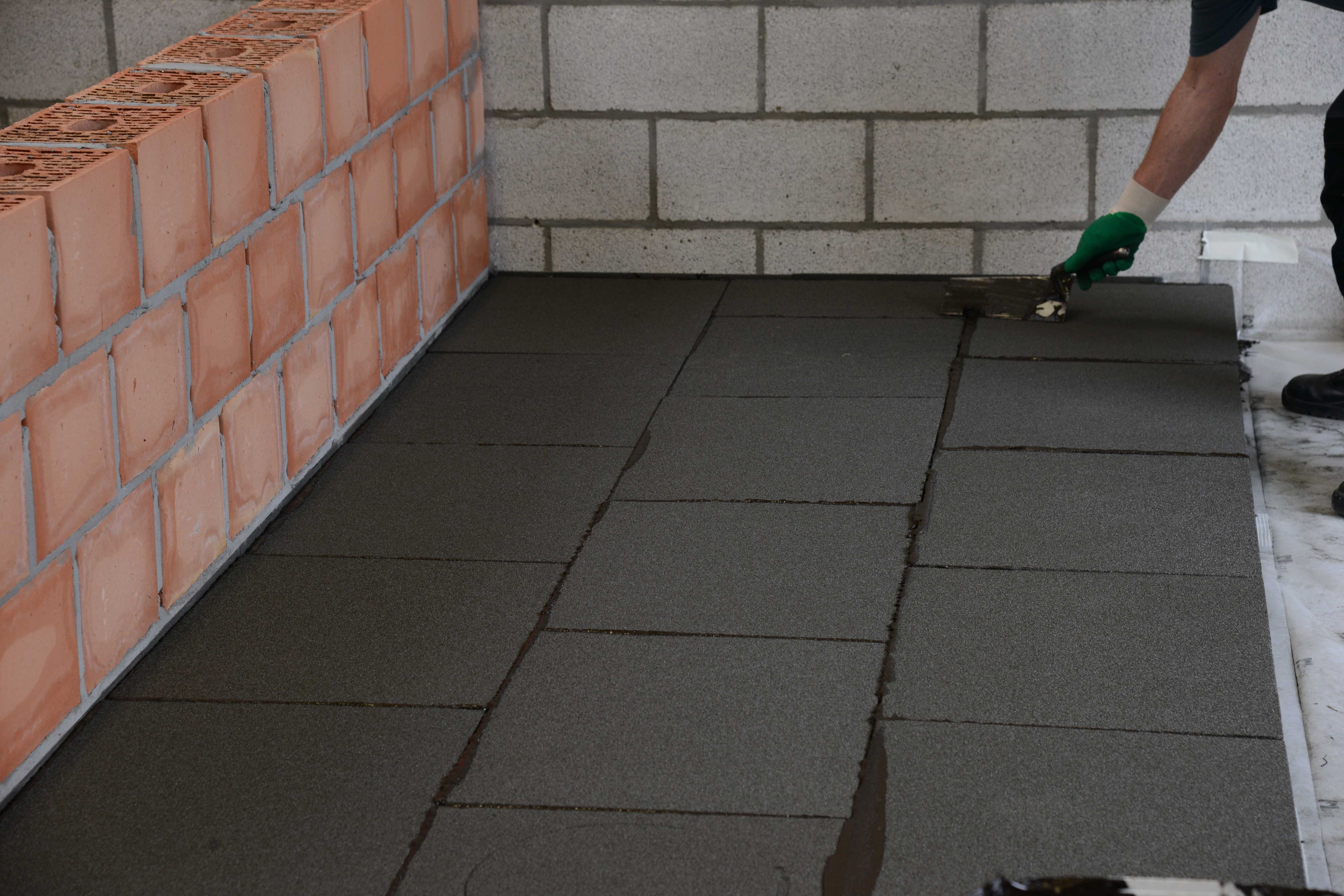How to install PERINSUL HL under window and door sills

Doors and full-height windows form part of a building’s thermal envelope, and should therefore be installed in line with the surrounding wall insulation for best effect. This is not always possible, however, and they are often supported by the inner leaf blockwork of a masonry wall, which acts as thermal bridge.
Laying PERINSUL HL
on supporting masonry
The detailing of a window sill or door threshold at ground floor level, incorporating a thermal break like PERINSUL HL, follows similar principles to installation at the base of an external wall.
PERINSUL HL units are designed around standard masonry unit sizes, and can easily be coursed in to the below-ground masonry to suit the sill level. They should be laid on the blockwork, on a standard 10mm mortar bed so they are level and fully supported.
The difference with PERINSUL HL units compared to conventional masonry is that they are laid end-to-end, tightly butted with no vertical mortar. No perpend joints means the continuity of the thermal break is maintained.
The ground floor insulation should tightly surround the inner leaf masonry. If the sill detail allows, any masonry cavity wall insulation should be installed in accordance with a current Agrément certificate and overlap with the floor insulation.
Installing a door or window
on PERINSUL HL
Fixing positions for a door or window are determined by the manufacturer. It is not recommended to fix through PERINSUL HL blocks, as this has a detrimental impact on their function as a thermal break.
Fixings can be made through a perpend joint, and it is therefore advised to consult with the door or window manufacturer, and FOAMGLAS®, to agree an appropriate fixing method based on the requirements of the project.
To prevent point loads acting on the PERINSUL HL units, a supporting board such as fibre cement should be laid on the units. The door or window can then be installed with a full mortar bed on the supporting board.




